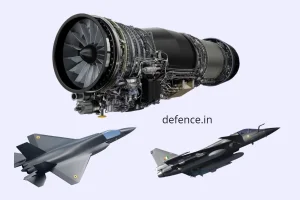- Views: 2K
- Replies: 7
India's indigenous artillery capabilities are set for a monumental leap forward as the Defence Research and Development Organisation (DRDO) is developing a suite of advanced ammunition for the Advanced Towed Artillery Gun System (ATAGS).
This initiative, led by DRDO’s Armament Research and Development Establishment (ARDE), aims to extend the howitzer's striking distance beyond 80 kilometres using next-generation ramjet-powered shells while introducing pin-point accuracy with NavIC-guided munitions.
This upgrade will position the ATAGS among the world's most powerful artillery systems and significantly strengthen India's self-reliance in defence manufacturing.
The ATAGS is a 155mm/52-caliber howitzer that represents a flagship project under the government's Aatmanirbhar Bharat initiative.
Developed through a public-private partnership between DRDO, Bharat Forge, and Tata Advanced Systems Limited, the gun is designed to replace older systems currently in service.
The 18-tonne ATAGS has already demonstrated impressive performance in trials, firing high-explosive base-bleed (HEBB) rounds up to its current maximum range of 48 kilometres.
It features a high rate of fire and an all-electric drive for superior automation and has proven its mettle in diverse terrains, including high-altitude tests in Sikkim.
The Indian Army has placed an initial order for 307 units, with production anticipated to accelerate after user trials conclude by mid-2026.
At the heart of this transformative upgrade is a new generation of indigenous ammunition being engineered by the Pune-based ARDE.
According to RP Pandey, the ATAGS Project Director at ARDE, the development is focused on three key categories designed to meet the evolving challenges of modern warfare, where long-range precision is paramount.
The enhancement plan includes:
- Bourrelet Ammunition: This initial upgrade focuses on refining the aerodynamic design of the shell. By optimising the bourrelet—the part of the projectile that aligns it within the barrel—engineers aim to improve flight stability, leading to greater accuracy and a modest increase in range. These shells are currently undergoing user trials, with integration expected by mid-2027.
- Precision-Guided Munitions (PGM): For surgical strikes, ARDE is developing smart shells equipped with course-correction technology. These munitions will primarily use India's indigenous NavIC satellite system for guidance, with GPS as a backup, to achieve an exceptional accuracy of less than 10 metres. This precision minimises collateral damage and is ideal for targeting high-value assets like enemy command posts or armoured vehicles. Prototypes are expected by 2027, with full operational readiness projected by 2030.
- Ramjet-Powered Shells: The most ambitious part of the programme involves artillery shells with their own air-breathing ramjet engines. This technology allows the projectile to maintain velocity over vast distances, extending the ATAGS's range beyond 80 kilometres. This "game-changing" capability, as described by Pandey, is expected to be realised by 2030 and will place India in an elite group of nations with such advanced artillery technology.
An effective range of over 80 kilometres will provide the Indian Army with a decisive advantage, far surpassing the capabilities of Pakistan's M198 howitzers (30 km range) and China’s PCL-181 truck-mounted howitzers (40 km range).
This will allow Indian forces to engage targets deep within enemy territory from a secure distance, disrupting supply lines and military infrastructure, a capability especially crucial in high-altitude border regions.
Furthermore, the integration of NavIC-guided shells ensures operational autonomy and resilience against the potential denial or jamming of foreign GPS services during a conflict.
The enhanced ATAGS will not operate in isolation but will complement India's existing long-range systems, such as the BrahMos supersonic cruise missile and the Pinaka multi-barrel rocket launcher.
This creates a formidable, layered offensive defence capability, significantly bolstering India's strategic deterrence and national security.

